While in Hawai'i we were especially interested in viewing the current volcanic activity. I reported on some of this in my post yesterday. We also took a no doors helicopter ride to see over to see Puʻu ʻŌʻo, the volcanic area that is erupting on Kīlauea's East Rift.
Above: our view as we were approaching Puʻu ʻŌʻo.
Here are two close shots looking into the volcanic cone, which at the time of our visit had two lava ponds within. The lava ponds were hidden, but marked, by twin plumes of volcanic gasses.
The USGS Hawaiian Volcano Observatory maintains a suite of solar powered instruments and transmitters that monitor the volcanic activity. You can seen them on the right in the shot above and in greater detail below.
There was also an active lava flow, that at the time of our flyover, was moving to the northeast (red & pink areas in the map below).
Here are a pair of wide angle USGS HVO photos taken the same day as our helicopter flight. The first is looking toward the cone.
The shot below is with the cone behind the photographer:
Even though the volcano wasn't putting on some of the spectacular displays that it has in the past, the helicopter flight was still an amazing experience. The flight was very smooth and, yes, you could feel the heat of the lava below.
The volcanic landscape surrounding the cone is stark, with dramatic cuts through the rainforests on the southeast side of the Big Island.
Signs of its previous eruptive activity were everywhere.
We eventually headed right over the actively flowing lava. Just about all of it had a thin, somewhat shiny crust of hardening lava that insulates the molten rock within.
We did see some of the lava glow poking through. You can see it in this shot:
Pele's fires of creation are one of Nature's most impressive sights. I am confident that my wife & I will return when the volcano is more active, specifically to see her in action.
Above: our view as we were approaching Puʻu ʻŌʻo.
Here are two close shots looking into the volcanic cone, which at the time of our visit had two lava ponds within. The lava ponds were hidden, but marked, by twin plumes of volcanic gasses.
The USGS Hawaiian Volcano Observatory maintains a suite of solar powered instruments and transmitters that monitor the volcanic activity. You can seen them on the right in the shot above and in greater detail below.
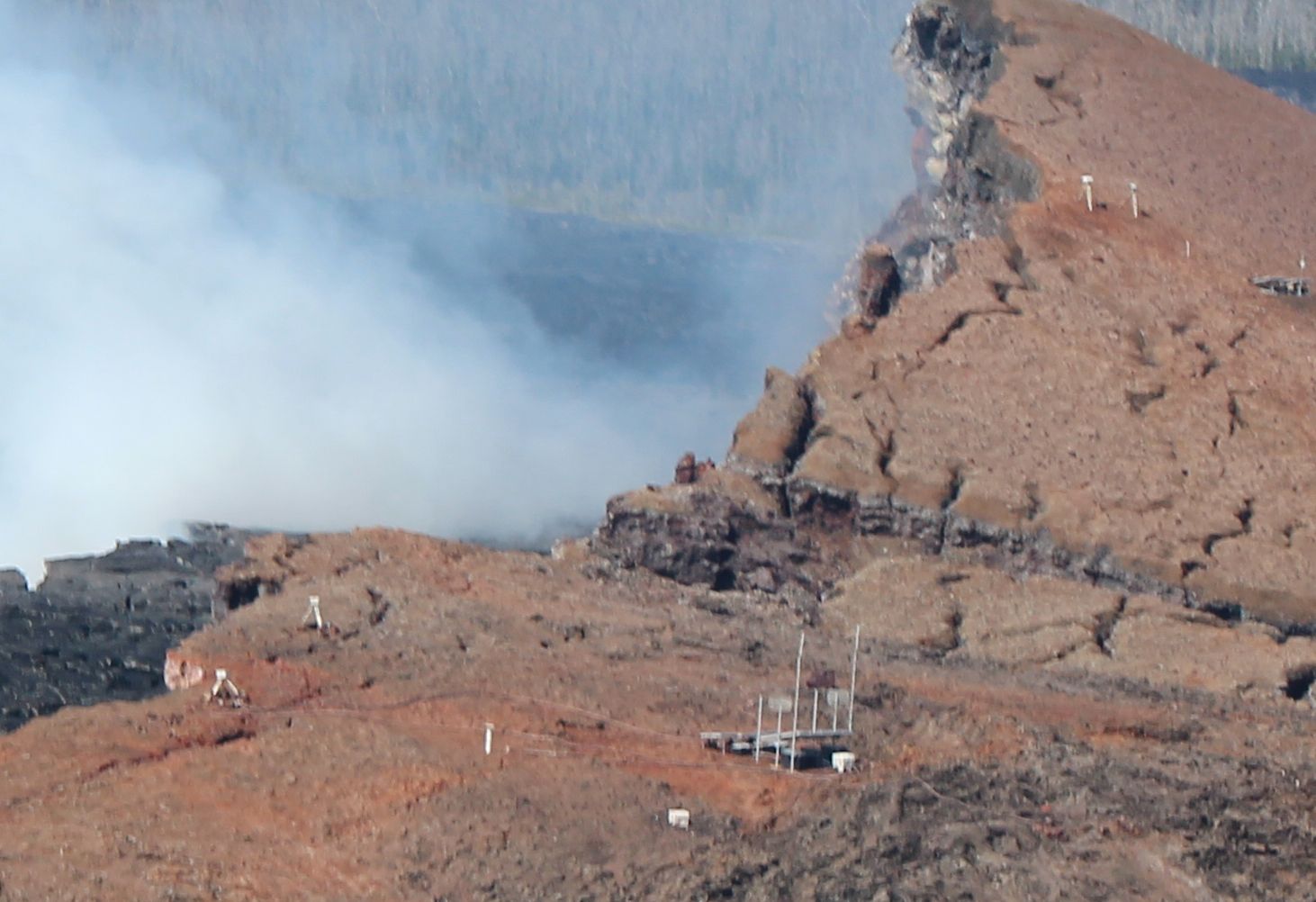 |
| Your tax dollars at work studying an active volcano. |
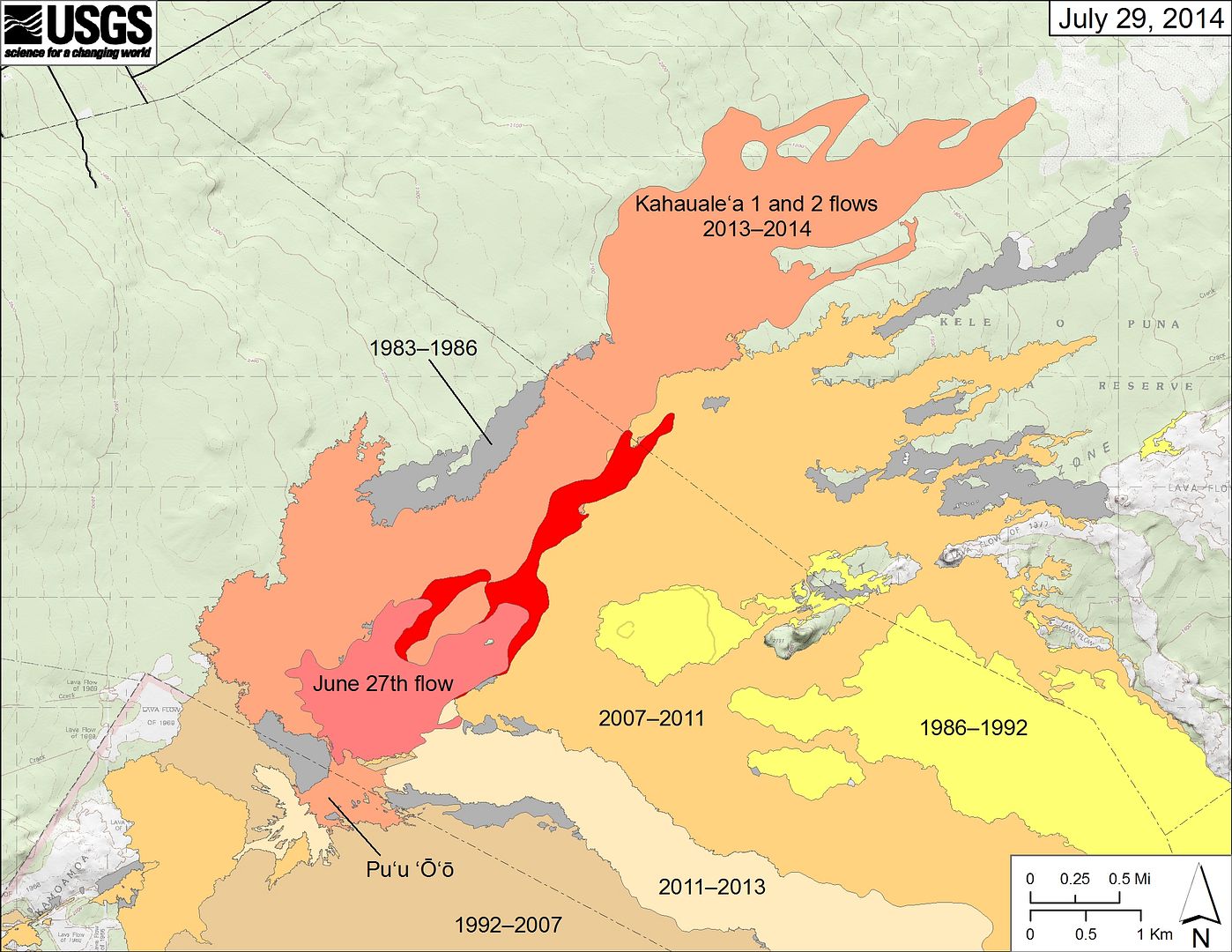 |
| A map of Puʻu ʻŌʻō and its lava flows from the USGS Hawaiian Volcano Observatory |
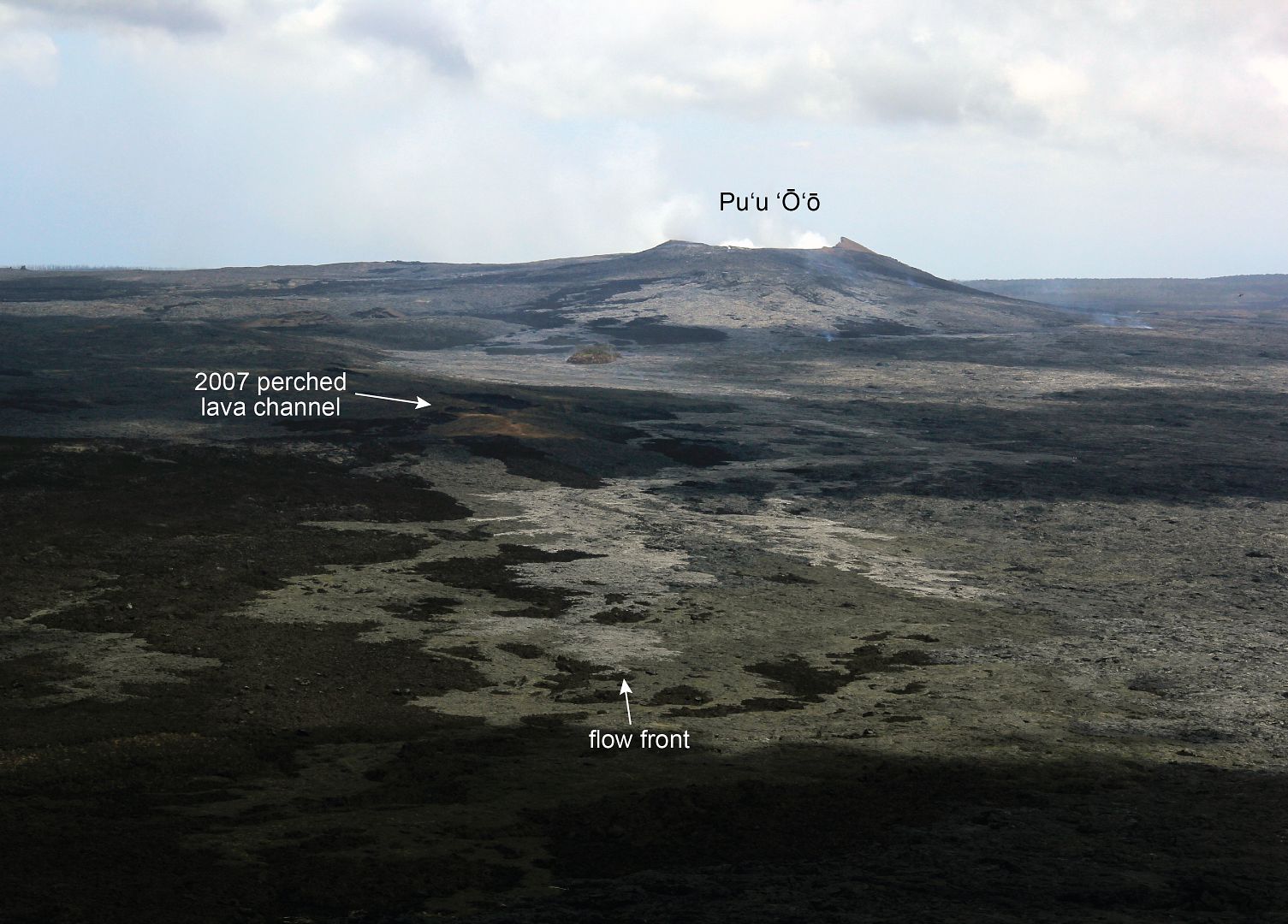 |
| USGS Hawaiian Volcano Observatory photo |
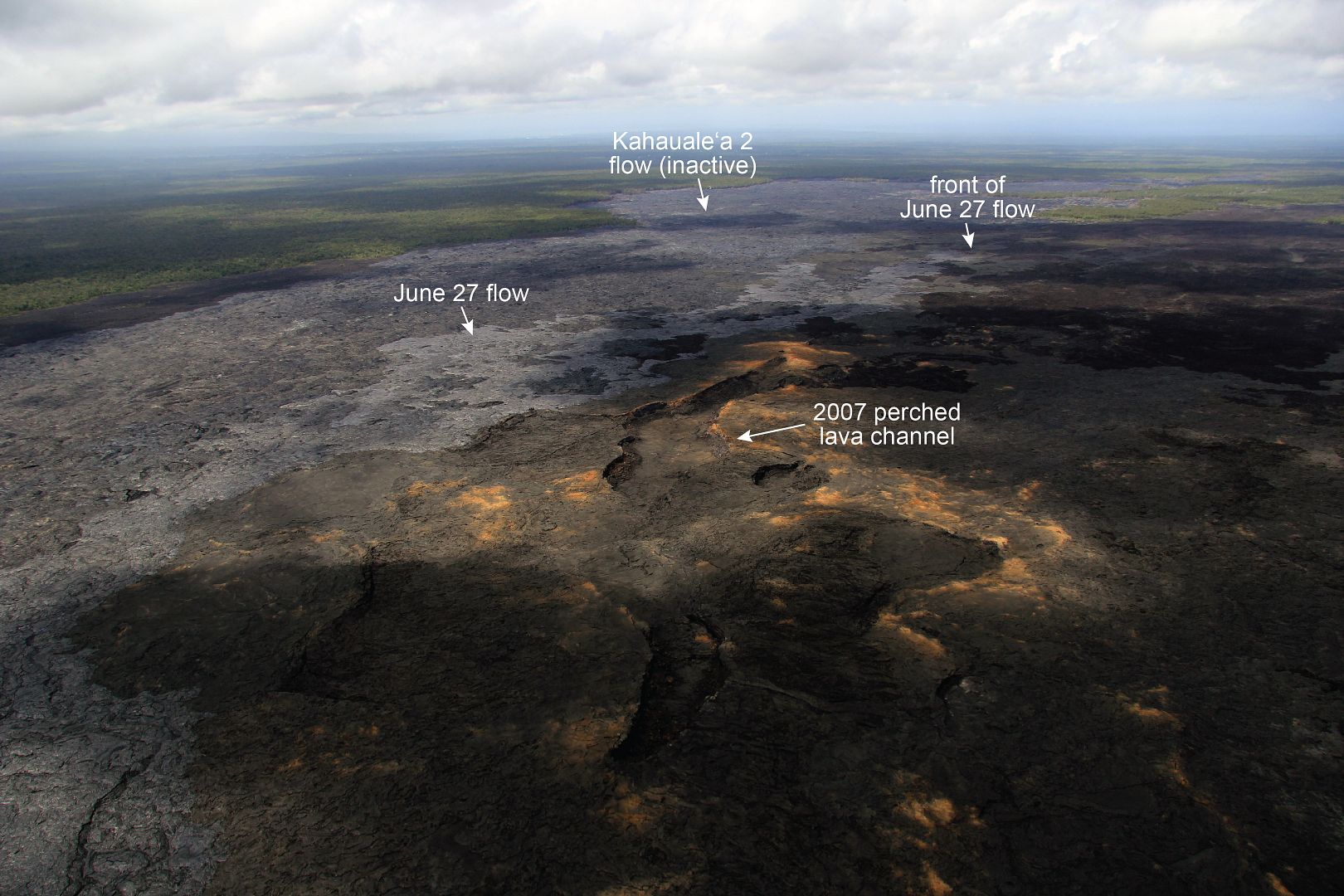 |
| USGS Hawaiian Volcano Observatory photo |
The volcanic landscape surrounding the cone is stark, with dramatic cuts through the rainforests on the southeast side of the Big Island.
We eventually headed right over the actively flowing lava. Just about all of it had a thin, somewhat shiny crust of hardening lava that insulates the molten rock within.
We did see some of the lava glow poking through. You can see it in this shot:
Pele's fires of creation are one of Nature's most impressive sights. I am confident that my wife & I will return when the volcano is more active, specifically to see her in action.


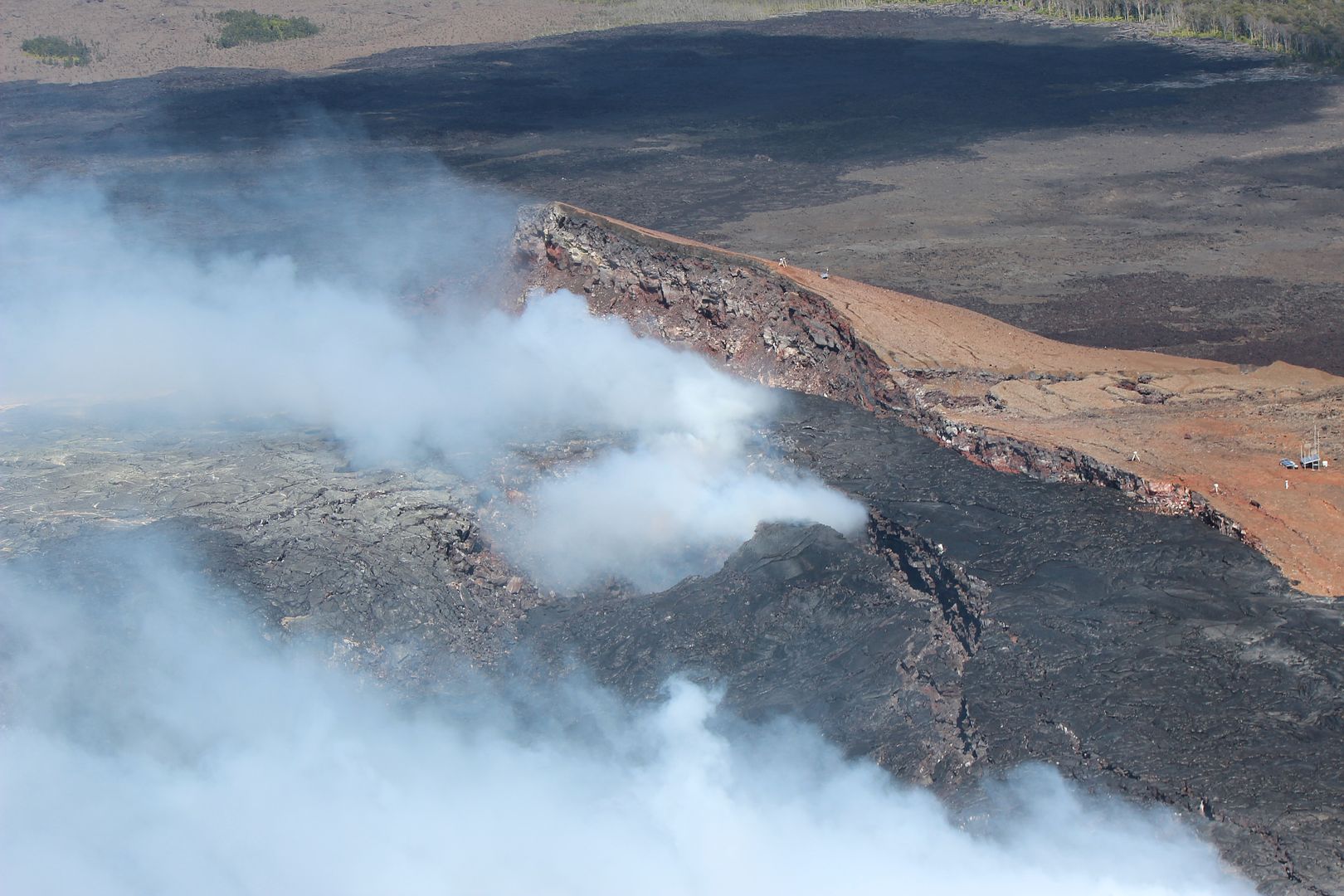
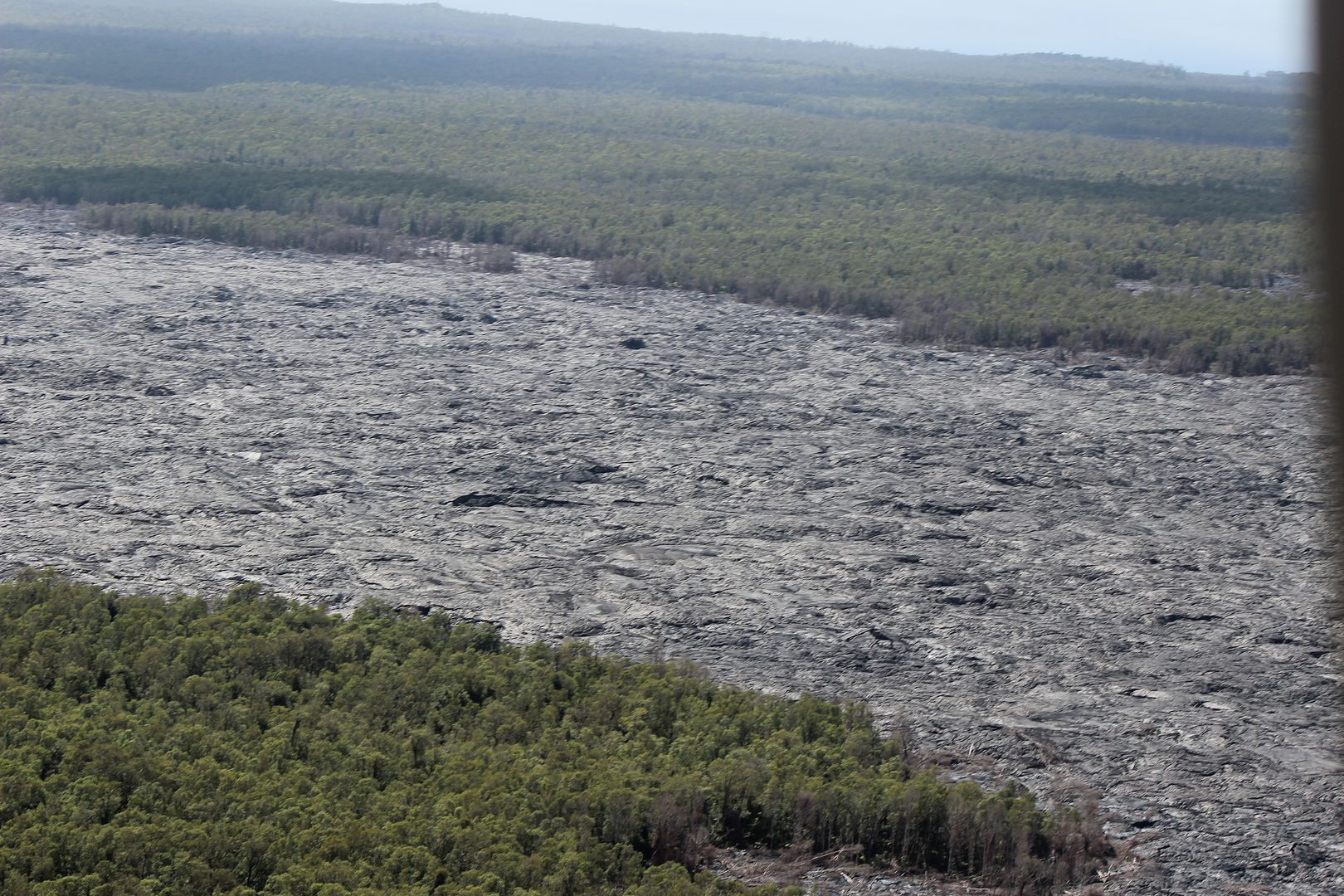
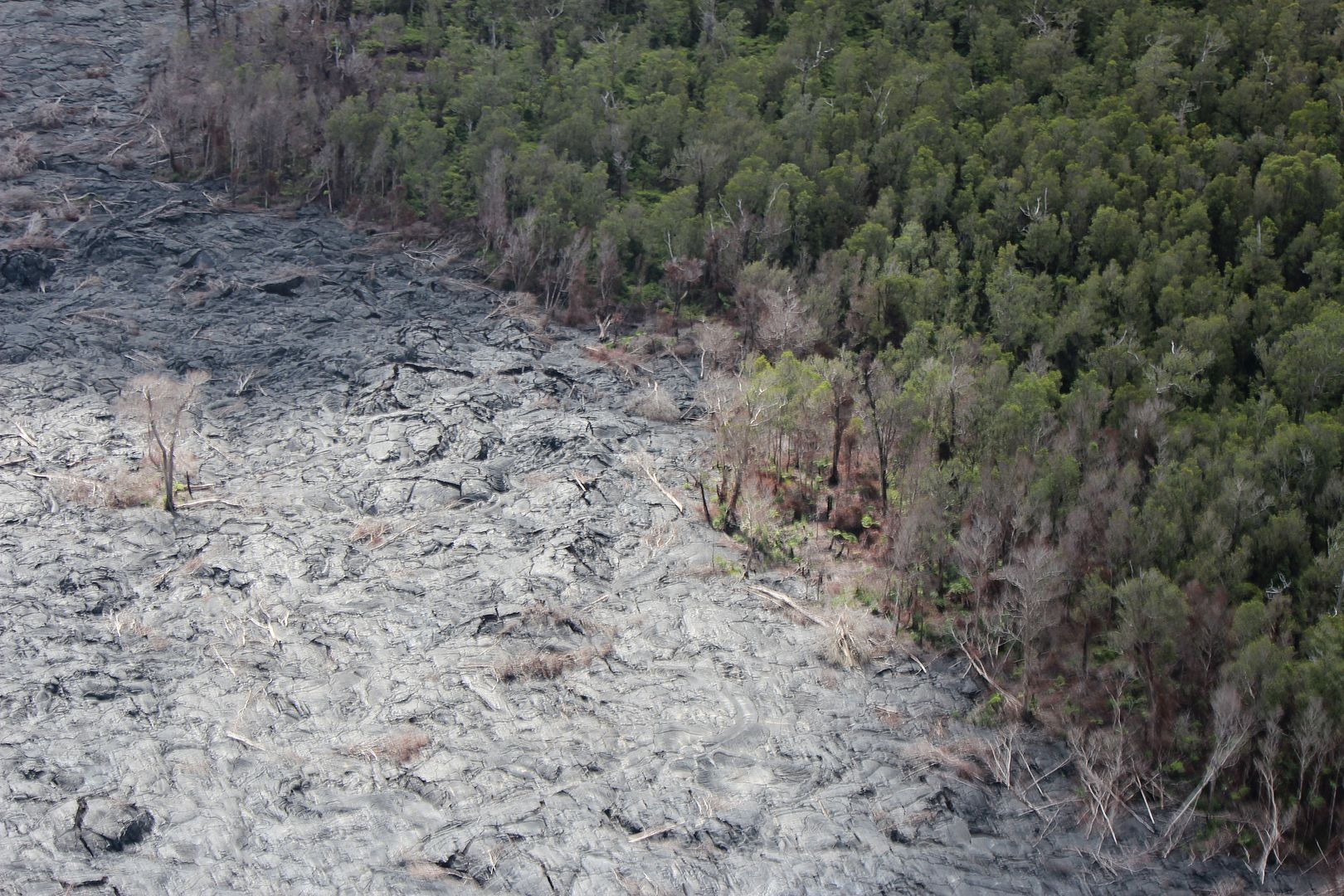

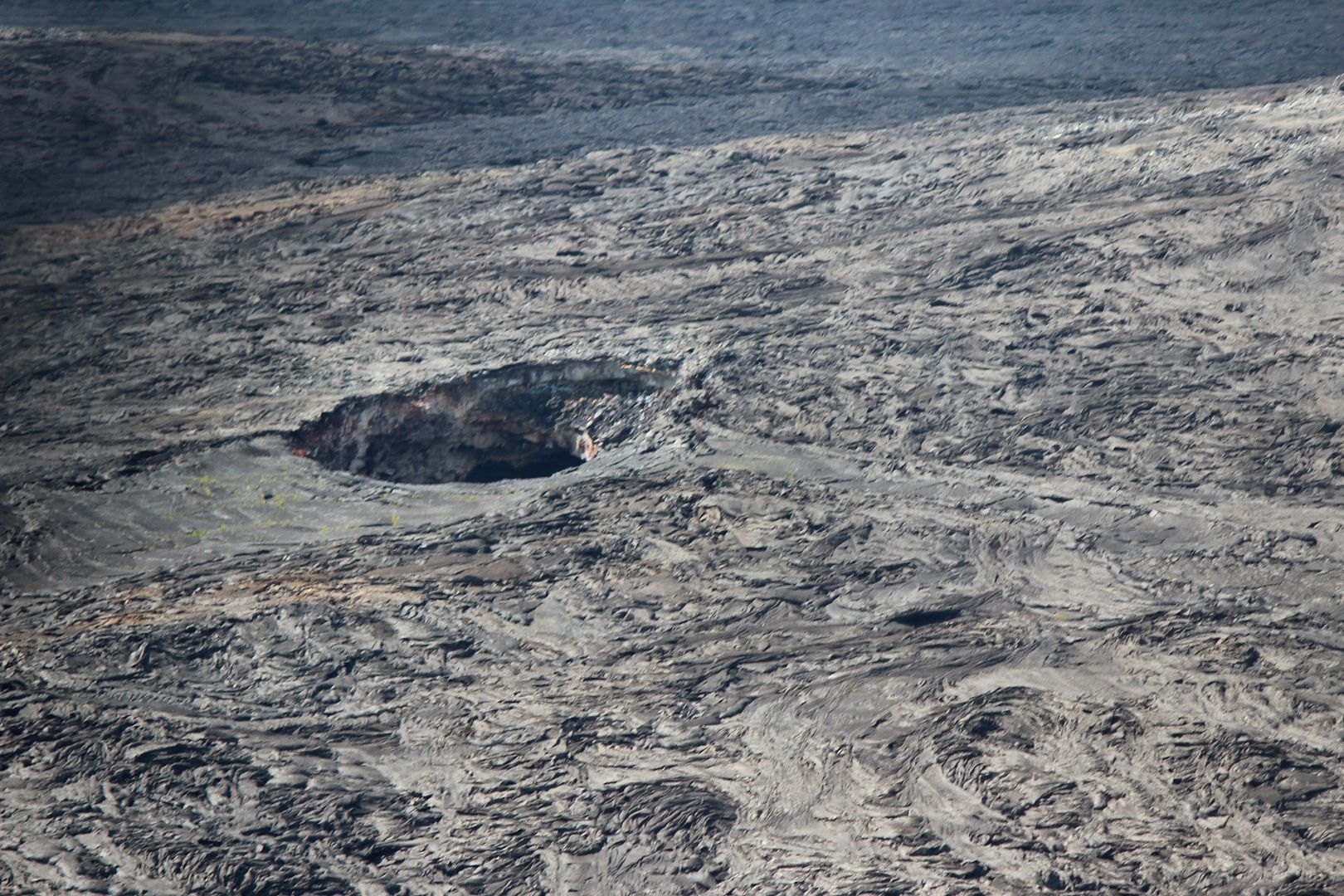
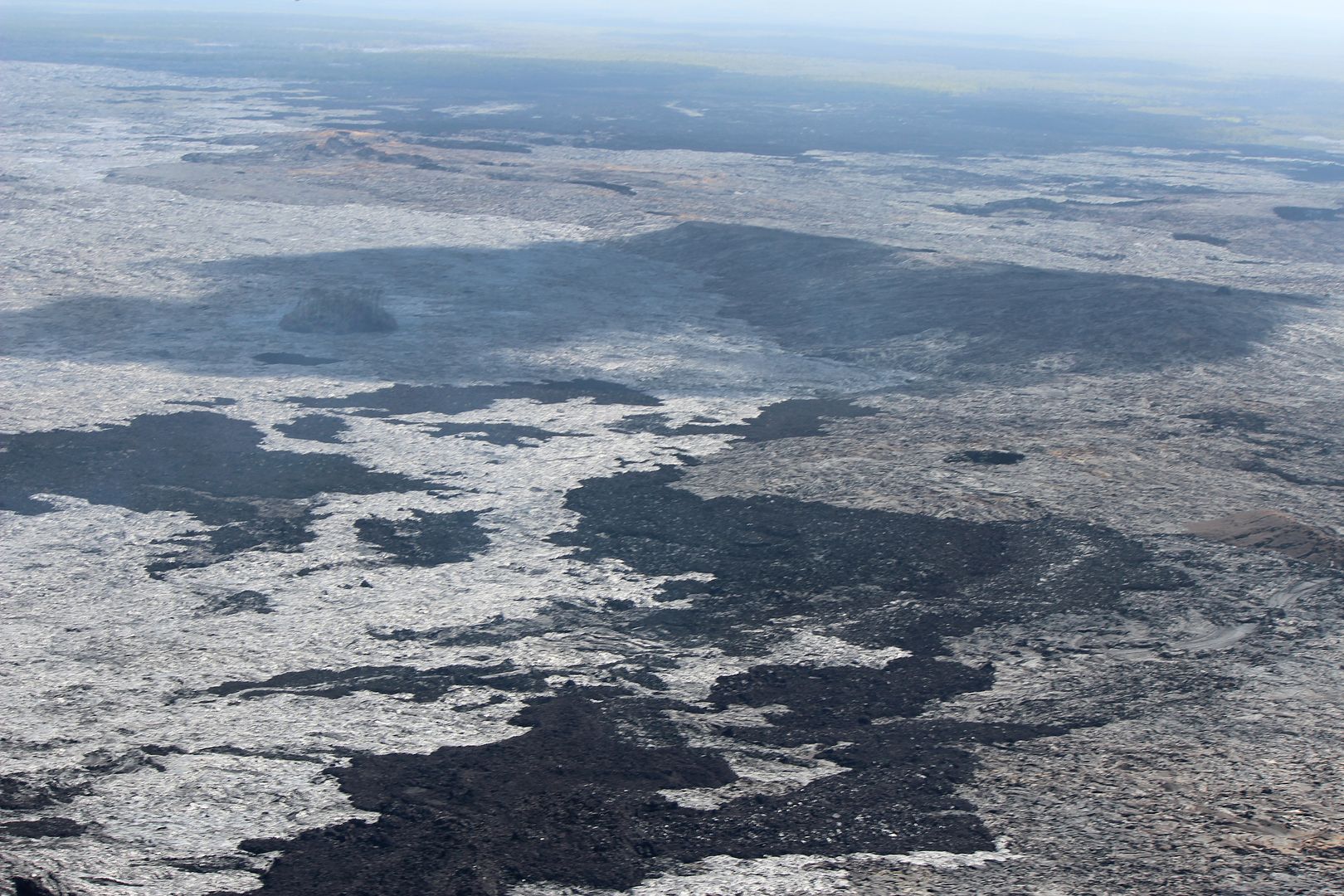
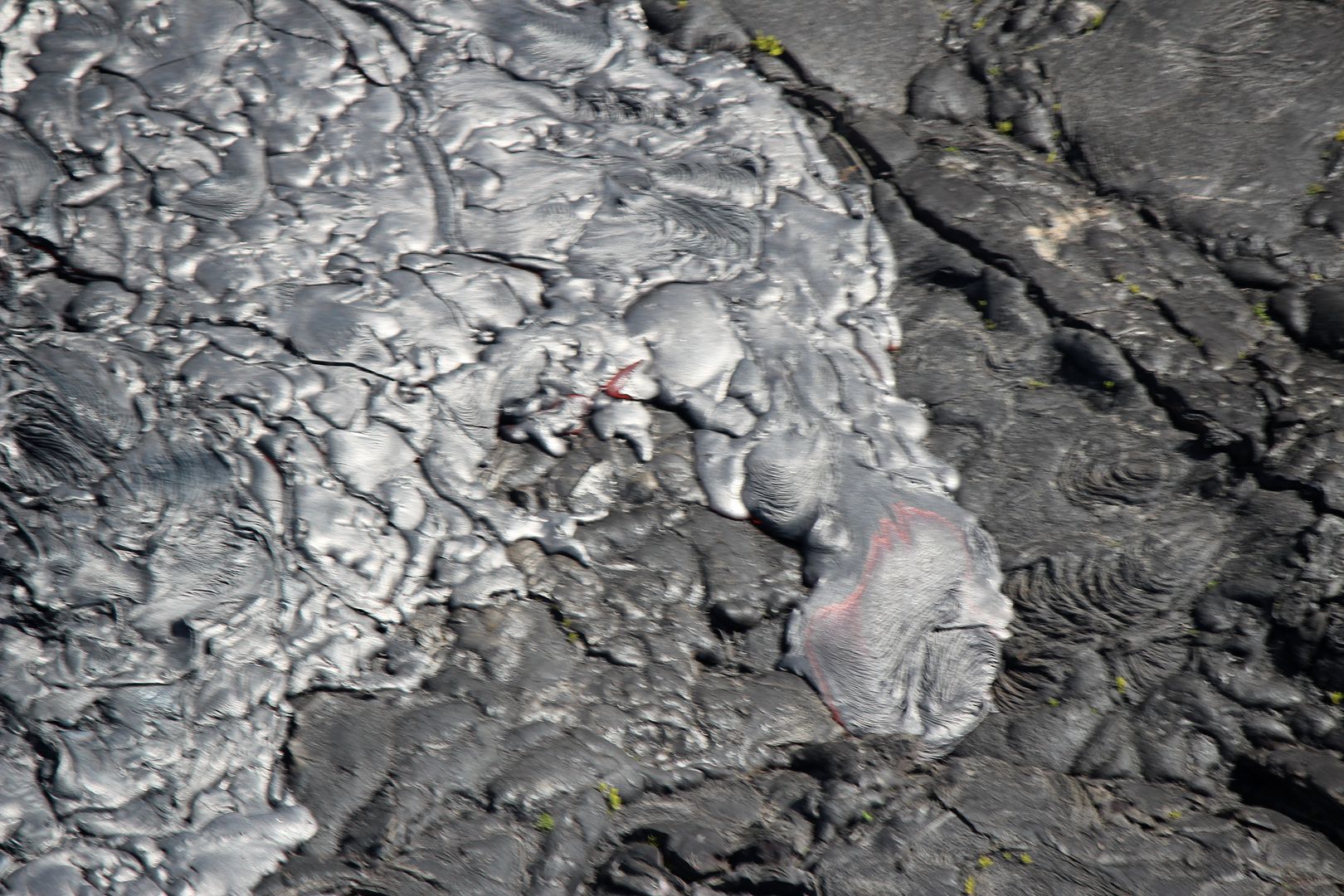
No comments:
Post a Comment